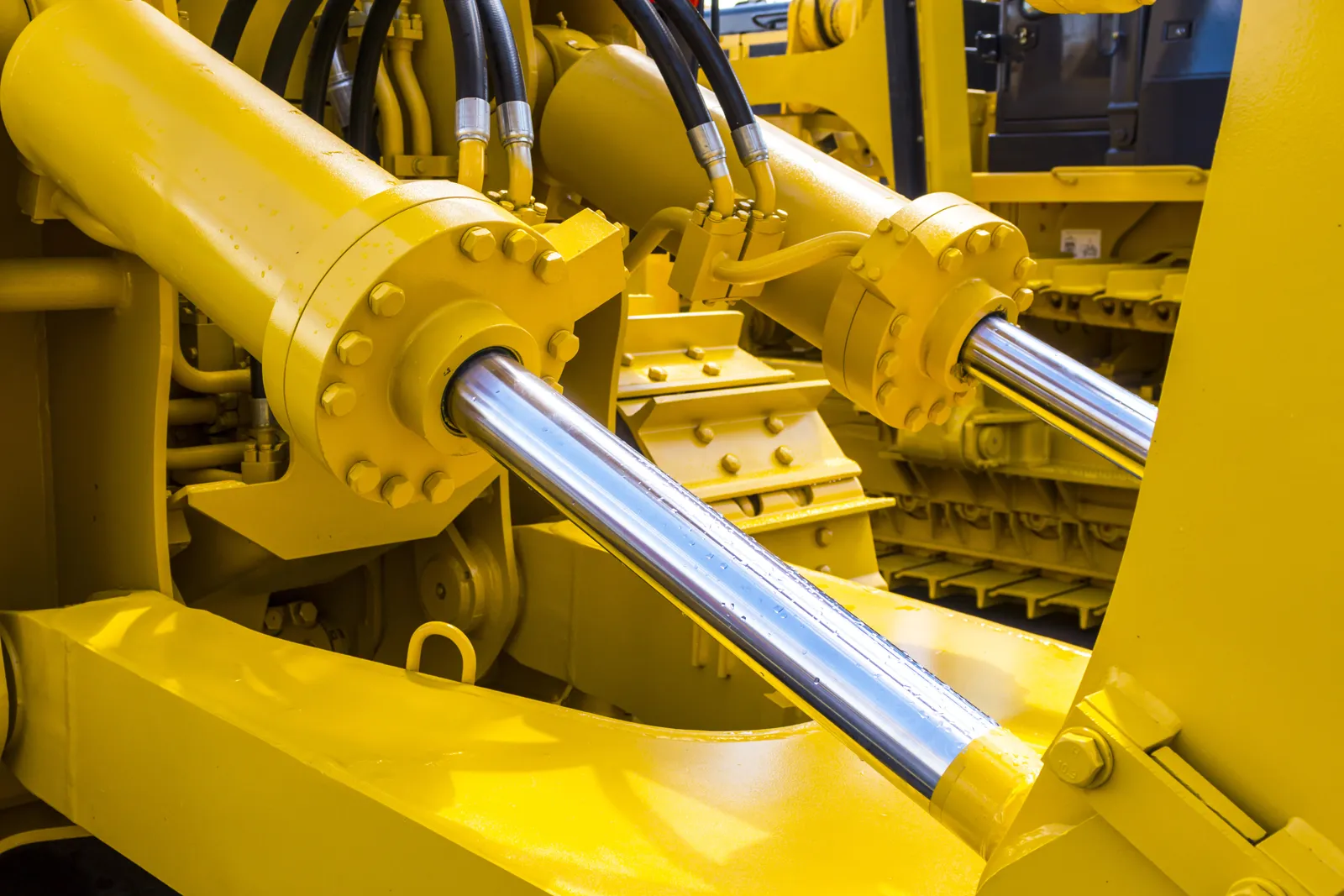Many everyday tools depend on hydraulic systems, like the brakes on your car and the arms on a digger. Fluid mechanics is the study of how gases and liquids behave in different situations. It is at the heart of these strong systems. Even though they are very complicated, hydraulic systems work on a simple idea: they use fluid under pressure to move things and transfer power.
We can move big things, steer cars, and control factory equipment by carefully designing systems that move liquids like oil or water through them. Fluid mechanics is a field of study that helps engineers make tools that are very strong, accurate, and efficient.
How to Get Started with Hydraulic Systems
A fluid tank, a pump, control valves, and tools like cylinders or motors are the main parts of any hydraulic system. These parts work together to control the flow of liquid and make machines move. The pump moves the fluid through the system by taking it from the tank. The direction, speed, and pressure of the flow are then controlled by valves, while the energy in the fluid is turned into action by motors.
Fluid mechanics rules make sure that this flow acts in a predictable way when pressure, temperature, and mechanical load change. Engineers make systems that work reliably even in harsh situations by carefully planning their layout and studying how fluids move through them.
Pascal’s Law is the basis of hydraulics
Pascal’s Law is the basis of hydraulics. It says that when pressure is given to a fluid that is contained, it moves equally in all directions. In other words, a small force applied in one place can make a much stronger force elsewhere in the system. For instance, a two-ton car can be stopped with little effort by pressing on the brake pedal. This is possible because the fluid pressure is spread out widely and increased in the brake lines.
This idea explains how small pistons can control big moves and how hydraulic systems can effectively increase power. For the same reason, hydraulic lifts and presses can make thousands of pounds of force from small machines.
Stress, Flow Rate, and Viscosity: What They Do
The working fluid’s viscosity, flow rate, and pressure are some of the most important factors that determine how well a hydraulic system works. It tells you how thick or thin the fluid is. If the fluid is too thick, the system might not react quickly; if it’s too thin, it might not push against things strongly enough or keep moving parts smooth enough.
How fast an actuator moves is set by the flow rate. This is based on how fast the pump is running and how wide the valves open. Pressure, on the other hand, moves loads and overcomes barriers… To keep things in balance and make sure energy moves smoothly, you need to have a good idea of fluid physics in order to control these qualities.
To make a system that works, you have to think about how fluids move through lines, around corners, and through small fittings. Fluid physics gives engineers the formulas and models they need to keep pressure loss to a minimum, friction to a minimum, and problems like turbulence and cavitation to a minimum.
Using hydraulic power in the real world
In almost every big business, you can find hydraulic systems. They drive backhoes, cranes, bulldozers, and excavators in building, which makes it easy for workers to move dirt and big things. In manufacturing, precise control is used to shape and form metal with hydraulic presses, and fluid power is used by automatic machinery to place, cut, and put together goods on the factory floor.
Hydraulics are used a lot in the car business for turning, stopping, and handling. Hydraulic devices are used to move landing gear, wing flaps, and control surfaces on airplanes. Tractors and harvesters use hydraulics to lift, till, and plant crops, so they can be used in farming too. Hydraulic power is an important part of modern engineering because it is strong and flexible.
Fluid mechanics in the design of hydraulic systems
To make a hydraulic system that works well, you need to think like a fluid mechanic. Engineers have to think about how the form and size of pipes affect the flow of liquids. When resistance goes up, pressure drops and heat builds up in narrow pipes. Pumps need to move the right amount of fluid without making too much noise or wear. To control flow and direction, valves need to act quickly and correctly.
Temperature is also important. When fluids get hot, they thin out, which changes their flow and how well the system works. It is very important to pick the right fluid and keep it within a certain temperature range. Other things, like staying away from air bubbles (which can cause movement to be shaky) or cavitation (when gas bubbles form and pop), are also affected by fluid mechanics and affect how systems are designed.
All of these situations must always be handled by hydraulic devices. To make tools that are strong, safe, and last a long time, engineers need to know about fluid qualities, flow dynamics, and system behavior.
Pros of using hydraulic systems
There are several reasons why hydraulic systems are better than mechanical or electrical ones. One of their best features is that they can make a lot of force from small parts. The system can give a lot of power without the need for big or heavy motors because the fluid spreads the pressure evenly.
One more benefit is that speed and direction can be perfectly controlled. Without the right valves, hydraulic systems take a long time to start, stop, and reverse. This makes them perfect for tasks that need precise, smooth movement. They are also known for being strong and able to work in difficult conditions. Hydraulics need to be cared for and maintained, but they work well and can be used in a lot of different situations.
Fluid mechanics and the parts of a hydraulic system
Here is a graph that shows how fluid mechanics rules affect various parts of a hydraulic system:
| Component | Function | Related Fluid Mechanics Concept |
|---|---|---|
| Pump | Moves fluid through the system | Pressure generation, flow control |
| Cylinder (Actuator) | Converts fluid pressure into motion | Pascal’s Law, force-area relationship |
| Valves | Regulate flow direction and speed | Pressure drop, fluid resistance |
| Reservoir | Stores hydraulic fluid | Volume balance, temperature stability |
| Hoses/Pipes | Carry fluid between components | Friction loss, flow velocity |
| Filters | Remove contaminants from fluid | Flow restriction, pressure gradient |
This breakdown illustrates the essential connection between fluid behavior and system performance.
Frequently Asked Questions
Why do hydraulic systems use liquid instead of gas?
Liquids are nearly incompressible, which allows them to transmit force more predictably and efficiently than gases. This property is essential for accurate control and strong, stable movement.
How does fluid viscosity affect a hydraulic system?
Viscosity affects how easily the fluid flows. Higher viscosity means more resistance and slower response, while lower viscosity can lead to leaks or insufficient pressure. The right viscosity keeps the system efficient and components well-lubricated.
What causes pressure loss in a hydraulic system?
Pressure loss can occur due to friction inside pipes, sharp bends, small or clogged filters, or narrow fittings. Managing these elements is crucial for maintaining system performance and efficiency.
Is air in a hydraulic system a problem?
Yes. Air can compress, causing spongy or jerky movement. It also reduces the system’s ability to generate consistent force. Most systems require bleeding to remove trapped air and ensure smooth operation.
What is cavitation, and why is it harmful?
Cavitation happens when low pressure causes vapor bubbles to form in the fluid. These bubbles collapse violently, which can damage pumps and other components. Preventing cavitation involves proper pump sizing and maintaining correct fluid levels.
Can hydraulic systems be energy-efficient?
They can be very efficient when well-designed. Choosing the right fluid, maintaining clean components, and minimizing pressure loss help optimize performance and reduce energy waste.

